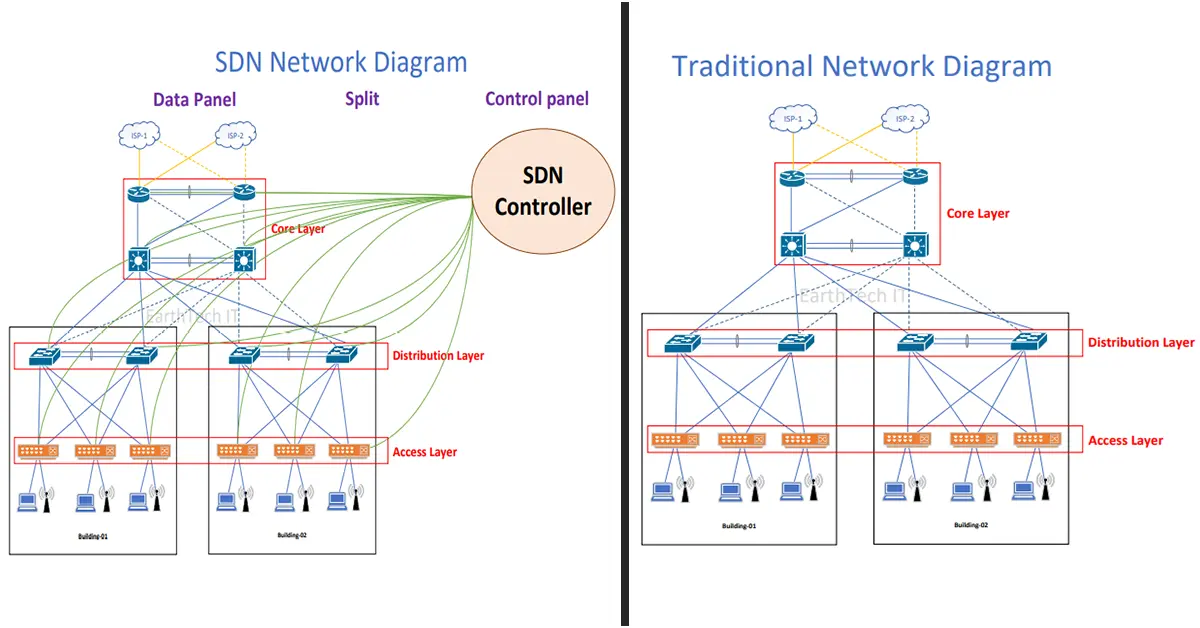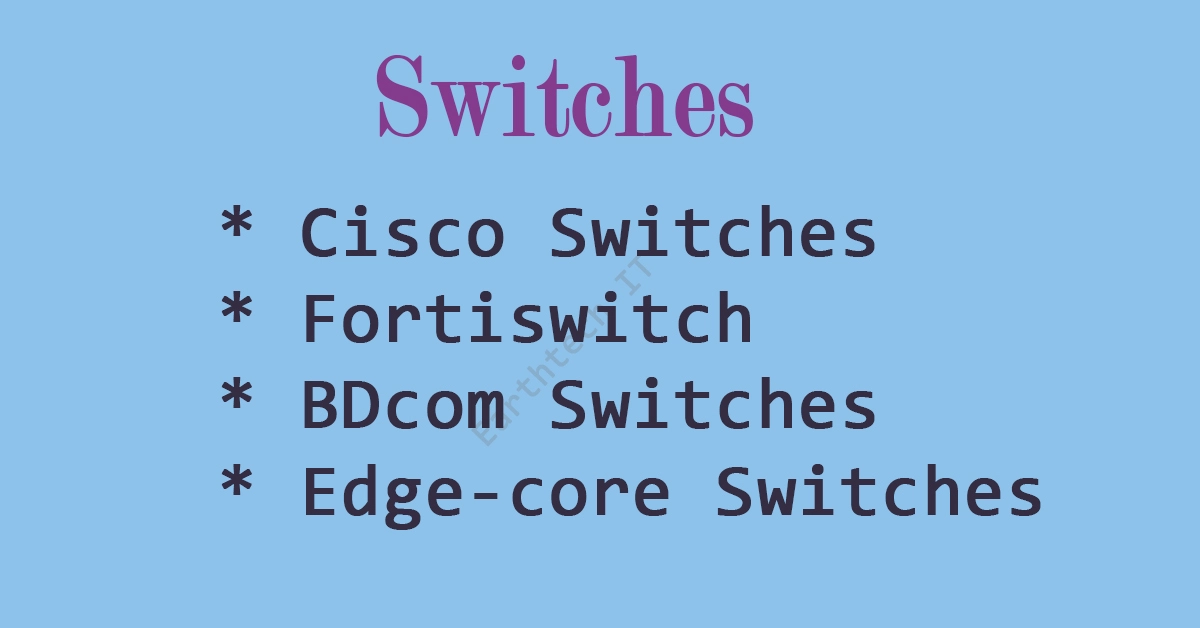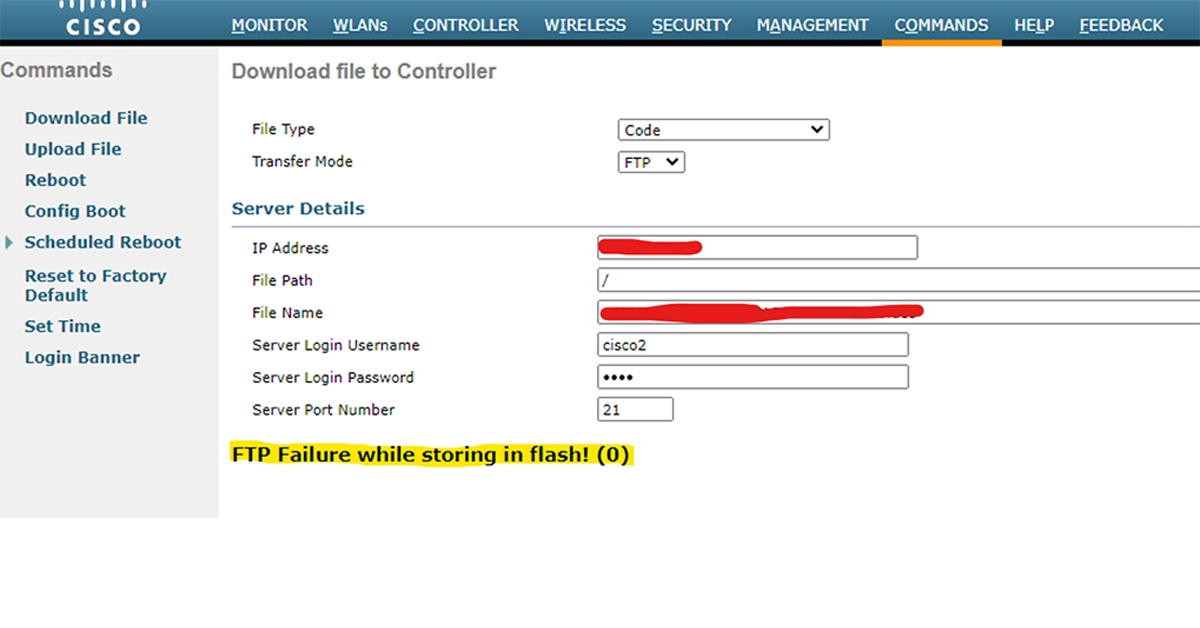To get into SDN topic, let’s start with knowing our traditional network first. Below you can see a diagram of a traditional network.
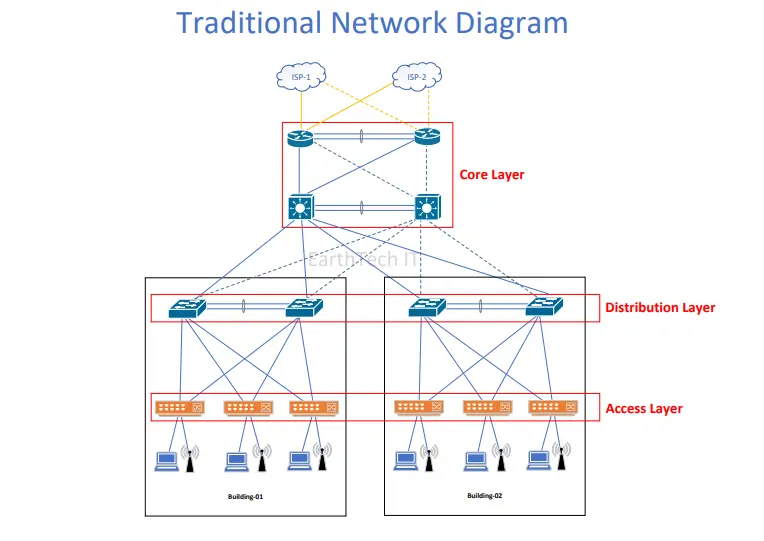
Traditional network
- Distributed Control: In traditional network, devices are individually controlled. Every devices have their own control plan.
- Manual Configuration: To make network configuration related changes it requires individual login on each device and need to make manual configuration. There’s no way to push the configuration automatically.
- Manageability Slow: When any new device adds on a network, all those new devices requires manual configuration. If there’s any new branch added then all the devices of that branch need to configure manually one by one which is time consuming.
- Difficult upgradation: When we need to upgrade an IOS of a device then we need to login on each device individually and upgrade them each and also it requires longer down time to complete total upgradation.
- Misconfiguration High: There’s always a chance of making mistakes while configuring all devices individually.
- Maintain Cost High: For traditional network, there’s always high network issues. And for troubleshooting those issues, more engineers are needed.
Software Defined Network (SDN)
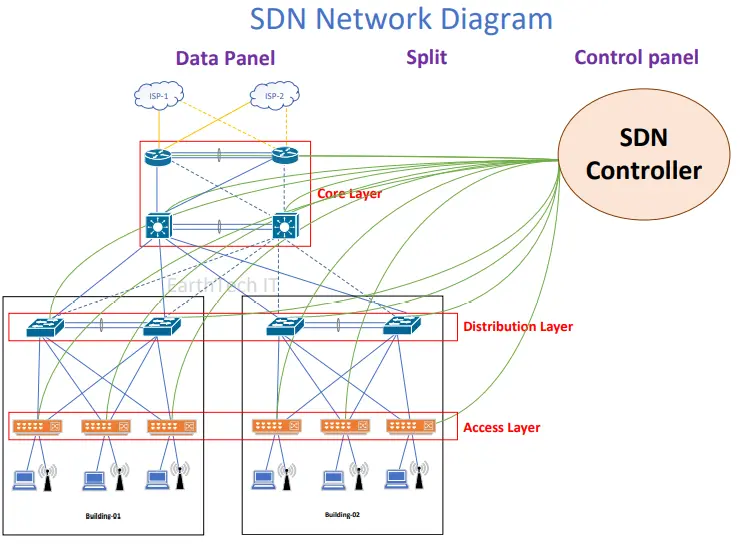
Generally SDN solution is used for big networks. With SDN solution, all the network devices are managed and configured in a centralized system with generating logs and reports of a network. Basically there’s some updated features on SDN network than traditional network.
- Centralized Control: All network devices can be controlled from a central point.
- Automatic Configuration: If there’s any network configuration related changes requires, it can the configured one or more at a time from a central point. There’s no manual configuration require for individual device.
- Manageability Fast: There’s no manual configuration required for any new devices. From SDN we can apply template to push all configurations automatically. If there’s a new branch added, all new devices of that branch can be configured with the SDN template within 1-2 second.
- Upgradation Easily: To upgrade IOS of the network devices we can upgrade it from a central point without login each device individually.
- Misconfiguration Low: As the devices aren’t getting individual configuration, so there’s a very little chance of misconfiguration.
- Maintain Cost Low: In a SDN network there isn’t too many administrator requires to maintain the network.
Now we’ll discuss about SDN family
Below solutions are called SDN family
- SDA
- ACI
- SD-WAN
On below diagram uses of SDN family are shown

